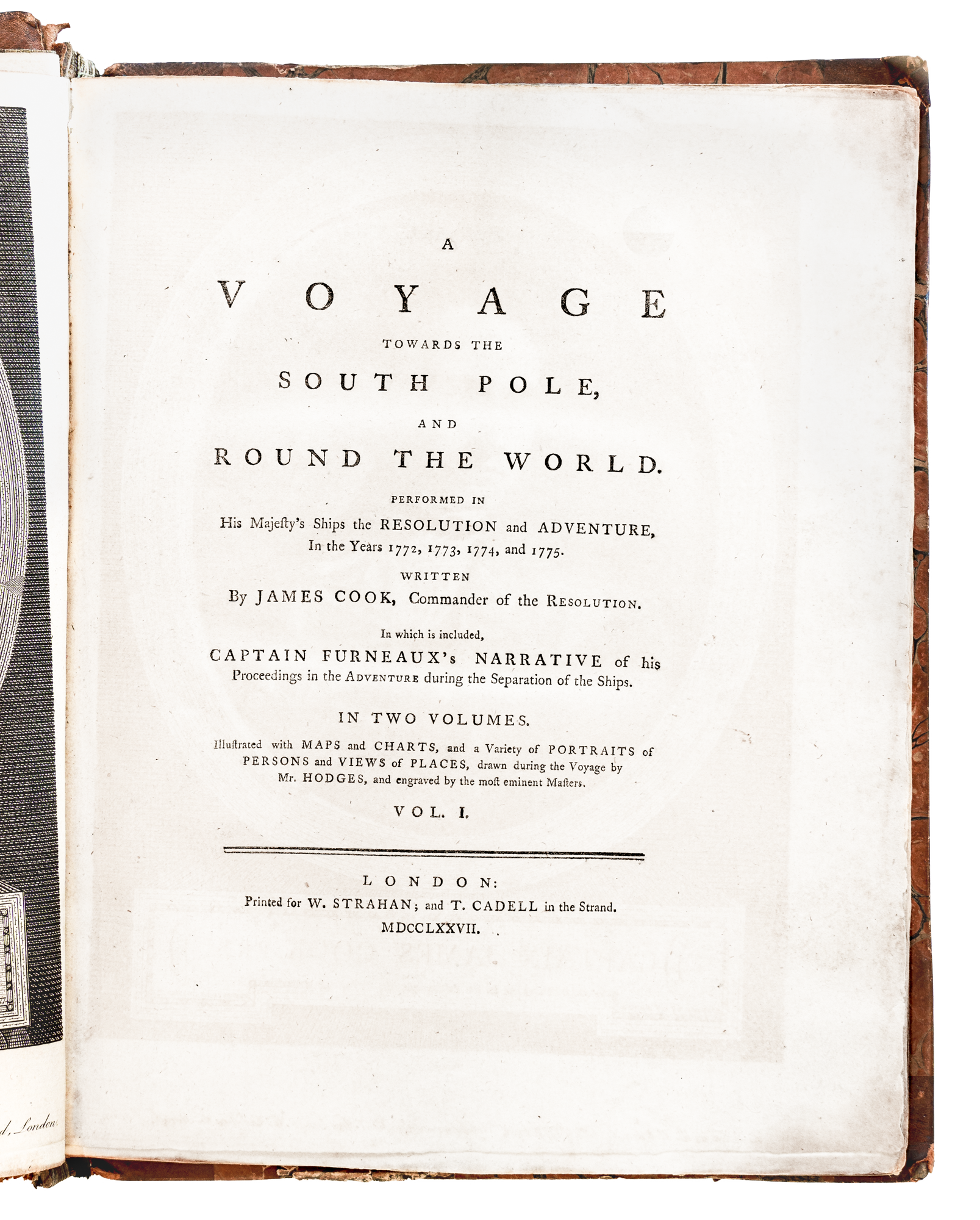In 1752 Alexander Dalrymple published his book An Historical Collection of Several Voyages and Discoveries in1770-1771. This claimed the existence of a great southern continent - a view held by some others in the influential Royal Society. As a result, only a few years after his first voyage around the world, Captain James Cook was commissioned to sail towards the south pole and determine whether another southern continent existed.
James Cook commanded HMS Resolution (462 tons) and Tobias Furneaux HMS Adventure (340tons) - both ships were modified North Sea colliers.
The Board of Longitude had asked Larcum Kendall (1719-1790) to copy and develop Harrison's H4 chronometer and this - along with three watches by John Arnold - were taken on the voyage. This enabled longitude to be established far more accurately and easily than had been possible previously and was a major improvement in navigation. William Wales, astronomer (1734-1798), was in charge of the watches and the calculation of longitude and recorded his readings in his own journal of the voyage.
Joseph Banks was originally to join the expedition but the additional accommodation he required made the ship top heavy and had to be removed. As a result Banks withdrew and his place as botanist was taken by Johann Reinhold Forster.
The two ships sailed from Plymouth 13 July 1772 and on 30 October 1772 anchored in Table Bay having put in at Madeira and the Cape Verde Islands on the way. From there they sailed south and reached the Antarctic Circle 17 January 1773 "-and are undoubtedly the first and only ship that ever crossed that line". On 8 February the two ships became separated in the fog and it had been agreed that in this event they would meet up at Queen Charlotte Sound, New Zealand. Furneaux sailed north and, reaching van Diemen's Land, charted the south and east coasts - the first time this had been done by the British and a major contribution to the voyage. He then sailed east reaching the agreed rendezvous at New Zealand 7 May 1773. Cook meanwhile took a different route and continued exploring in southern waters. He reached Queen Charlotte Sound on 17th May and was reunited with Furneaux.
The two ships spent the next five months exploring the south Pacific reaching Tahiti 15 August. However sailing back to New Zealand the ships again lost contact and missed each other at Queen Charlotte Sound. Furneaux then decided to return to England and later in a letter to Cook left at the Cape of Good Hope he explained why he had turned for home - the New Zealanders had "murdered and eaten ten of his best men in Queen Charlottes Sound".
Cook however continued to explore the Antarctic. Sailing south again he crossed the Antarctic Circle for the third time 30 January 1774 and continued until his way was blocked by the sea ice. He then turned north and completed a huge circle of the Pacific sailing to just below the equator and visiting the Friendly Islands, Easter Island, Norfolk Island, New Caledonia and Vanuatu finishing at Queen Charlotte Sound 18 October 1774.
On 10 November 1774 Resolution began the long journey home sailing eastwards and reaching the Straits of Magellan 17 December. Passing Cape Horn Cook continued to explore the south Atlantic still looking for the great south land predicted by Dalrymple but without success. Turning north they discovered South Georgia and the South Sandwich Islands.
On his return to England Cook predicted that "..there is a tract of land near the Pole, which is the Source of most of the ice which is spread over this vast Southern Ocean
And later, in February 1775, he stated that the existence of a polar continent was "probable and that we have seen a part of it".
Cook had proved that there was no "great south land" in temperate latitudes south of Australia but that it was highly likely there was a continent of ice and snow.
